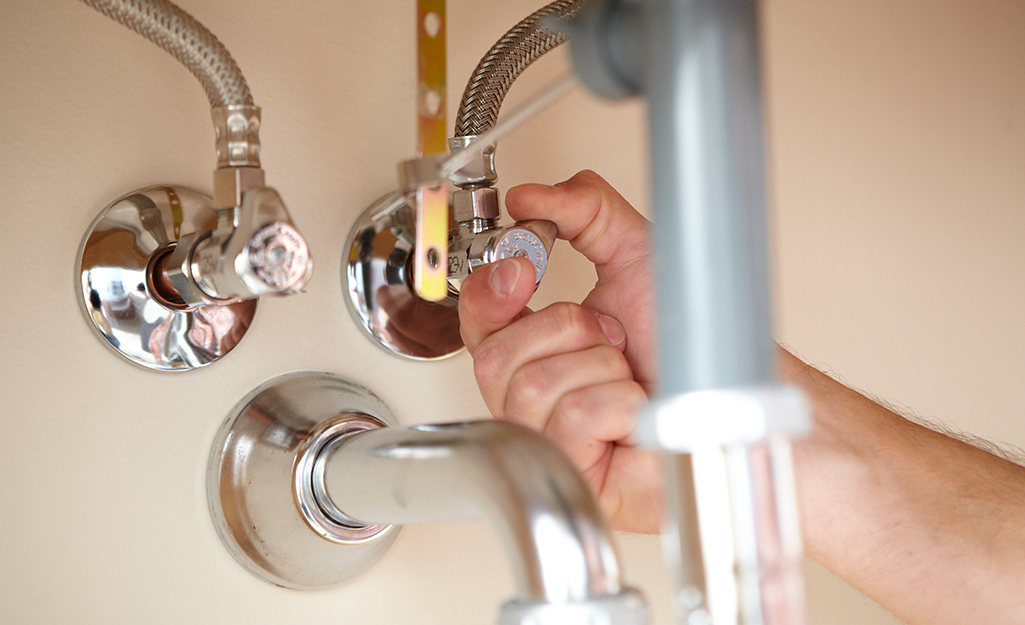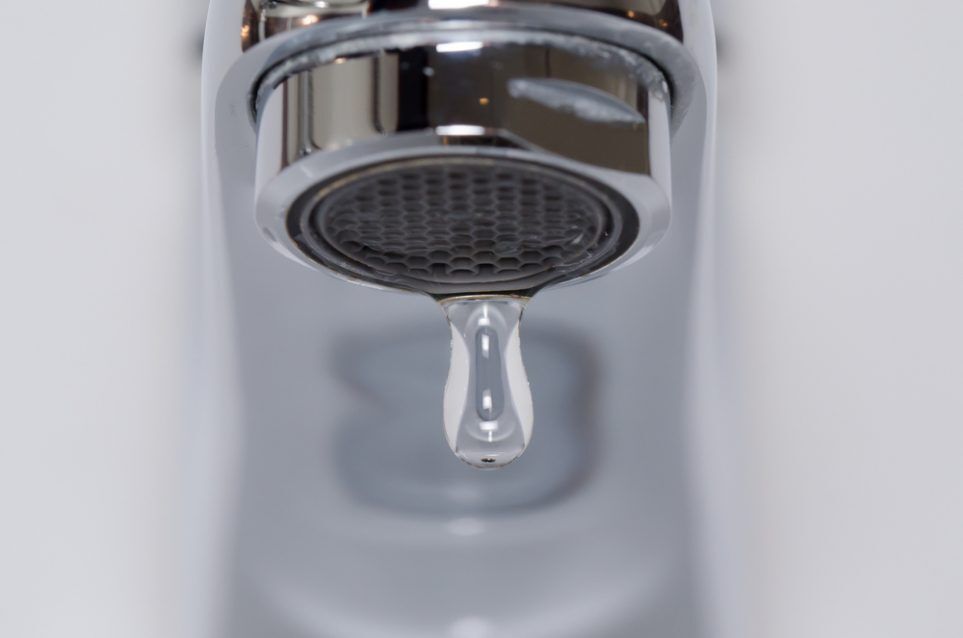The publisher is making a number of great pointers related to 4 Common Reasons for a Leaky Faucet as a whole in this article following next.

Leaking taps might appear like a minor aggravation, yet their effect goes beyond simply the inconvenience of the sound. From wasting water to incurring unneeded monetary prices and health dangers, overlooking a trickling faucet can result in numerous consequences. In this post, we'll delve into why it's crucial to address this common home problem immediately and properly.
Wastage of Water
Environmental Influence
Leaking taps add dramatically to water wastage. According to the Epa (EPA), a single tap dripping at one drip per secondly can lose more than 3,000 gallons of water each year. This not only stress water sources however additionally influences communities and wild animals based on them.
Step-by-Step Guide to Taking Care Of a Dripping Tap
Tools Required
Prior to trying to deal with a leaking faucet, gather the required tools, including an adjustable wrench, screwdrivers, substitute parts (such as washing machines or cartridges), and plumber's tape.
Usual Faucet Issues and Their Solutions
Determine the sort of tap and the specific concern creating the drip. Usual troubles include worn-out washers, corroded valve seats, or defective O-rings. Describe supplier instructions or on the internet tutorials for detailed assistance on repair services.
Financial Costs
Enhanced Water Expenses
Past the ecological influence, trickling faucets can pump up water bills considerably. The gathered waste over time translates into greater energy costs, which might have been avoided with timely repairs.
Potential Property Damages
Furthermore, extended trickling can bring about harm to fixtures and surface areas surrounding the faucet. Water accumulation can trigger discoloration, deterioration, and also architectural concerns if left ignored, causing additional fixing costs.
Health and wellness Problems
Mold And Mildew and Mold Development
The constant visibility of wetness from a dripping tap produces a perfect atmosphere for mold and mold growth. These fungis not only jeopardize indoor air high quality but additionally present wellness threats, specifically for people with respiratory problems or allergies.
Waterborne Illness
Stationary water in trickling faucets can come to be a breeding place for bacteria and other microorganisms, increasing the risk of waterborne illness. Impurities such as Legionella bacteria thrive in stagnant water, potentially resulting in severe ailments when consumed or breathed in.
Do it yourself vs. Specialist Repair
Advantages and disadvantages of DIY Repair Work
While some may attempt to fix a dripping tap themselves, DIY repairs feature their very own collection of challenges. Without proper expertise and devices, DIY efforts can worsen the issue or lead to insufficient repair work, lengthening the issue.
Advantages of Hiring a Specialist Plumber
Employing a specialist plumber guarantees that the underlying cause of the leaking tap is dealt with properly. Plumbing professionals possess the competence and devices to identify and fix tap issues efficiently, conserving time and decreasing the threat of further damage.
Environmental Obligation
Specific Payment to Preservation
Taking duty for taking care of trickling taps straightens with more comprehensive initiatives towards water preservation and ecological sustainability. Every person's activities collectively make a significant influence on protecting precious sources.
Sustainable Living Practices
By prioritizing punctual repair services and adopting water-saving behaviors, individuals add to sustainable living methods that profit both existing and future generations.
Safety nets
Regular Maintenance Tips
To prevent dripping faucets, carry out routine upkeep such as cleansing aerators, evaluating for leaks, and replacing damaged parts promptly. Furthermore, consider setting up water-saving tools or upgrading to more effective fixtures.
Relevance of Prompt Services
Addressing trickling taps as soon as they're noticed protects against further water wastefulness and potential damage, eventually conserving both water and money in the long run.
Influence On Property Worth
Assumption of Well-Maintained Residential Property
Preserving a residential property in good condition, consisting of dealing with maintenance problems like trickling taps, improves its perceived value and worth amongst prospective customers or occupants.
Influence on Resale Worth
Characteristics with well-maintained plumbing components, including taps, command higher resale worths in the property market. Dealing with trickling faucets can add to a positive impact during property assessments and negotiations.
Verdict
Resolving a leaking tap surpasses mere comfort; it's an essential step towards preserving water, lowering financial expenses, and guarding health and home. Whether with do it yourself fixings or expert aid, taking action to repair dripping faucets is a small yet impactful method to promote accountable stewardship of resources and contribute to a healthier, more lasting future.
How to Fix a Leaky Faucet: Step-by-Step Repair Guide
A leaky faucet may seem like a simple annoyance, but if it's not fixed promptly, that leak could cost hundreds to potentially thousands. From water damage to mold, mildew, and high water bills, even a tiny leak can be catastrophic if left unattended. Damage like this can even affect the overall value of your home, so it's important to take the right approach for leaky faucet repair. You may need the help of a plumber in some cases, but we've got a few tips you can try on how to fix a leaky faucet before calling the pros.
Four Faucet Types
When you're learning how to fix a leaky faucet, the first step is knowing what kind of faucet you're working with! There are four common types.
Cartridge Faucets
Cartridge faucets come in one- or two-handled varieties. In one-handled cartridge faucets, hot and cold water combines in a single cartridge. In the two-handled versions, hot and cold water are controlled separately and mixed in the faucet.
Ball Faucets
Ball faucets have a single lever you push up and down to adjust the pressure and rotate to change the temperature. A slotted metal ball controls the amount of water allowed into the spout.
Compression Washer Faucets
They're the oldest type of faucet, but they're still used in many homes — especially older ones. Compression faucets have two separate handles that, when turned, raise or lower the washer that seals a water valve. This valve stops water from flowing through the faucet when it is turned off.
Disc Faucets
Disc faucets rarely need to be repaired due to their maintenance-free design. The water flow is controlled by two discs — the upper one raises and lowers against a fixed lower disc, creating a watertight seal. If your disc faucet starts leaking, you may need to replace the seals or clean residue buildup from the inlets.
Fixing a Leaky Faucet
Step 1: Turn Off the Water
Whether you're learning how to fix a leaky bathtub faucet or how to fix a leaky kitchen faucet, always turn off the water supply to your working area when you're fixing a leak. The last thing you want is a flood added to your list of things to fix.
Look for the shutoff valves below your sink or around the tub and turn them clockwise to stop the water flow. If your faucet doesn't have shutoff valves, you may need to turn off the water for the whole house. Check to make sure it's off by turning the faucet on. If nothing comes out, you're ready to start the repair.
Step 2: Take Apart the Faucet
How you disassemble your faucet depends on the type of fixture you have. You can use a flathead screwdriver to remove the caps on top of the handle or handles for cartridge and compression faucets. Inside, you should see handle screws. Unscrew these with a screwdriver to remove the handle.
Disc- and ball-style faucets will typically have an inlet screw near the handle, and removing that will reveal the interior of the faucet.
Detach the Valve Stem
For cartridge- and compression-style faucets, you'll see the inner valve stem or cartridge once you remove the faucet handles. If you have a compression faucet, unscrew the brass valve stem. If you have a cartridge faucet, pull out the cartridge. If your cartridge has been in place for a while, it may require some tools or extra force to remove it due to mineral deposits.
Examine and Replace Parts
Once you've removed the parts, check them out to confirm what needs to be replaced. You may see corroded rubber washers, O-rings, stems, or cartridges. On a ball-style faucet, check the seats and springs for damage.
If you need to repair a leaky disc faucet, check the inlet and seals on the lower disc.
Once you determine what parts must be replaced, visit your local hardware store. Bring the damaged parts with you to ensure you can purchase the correct components to replace them.
Clean Valves and Faucet Cavity
If you've removed a stem or cartridge, you may notice mineral buildup in the faucet's threads. Use white vinegar to clean the valve seat by soaking it for a few minutes, then scrub it away with a soft toothbrush and rinse with warm water. You can also clean the interior of the faucet in the same way.
Reassemble the Faucet
Once your faucet is cleaned and the required parts have been replaced, it's time to reassemble it. Put the pieces back together and slowly turn the water supply back on. Doing this slowly is crucial because too much initial water pressure can damage the new hardware you've just installed.
https://homewarranty.firstam.com/blog/how-to-fix-leaky-faucet

I found that post about Why Is It Important To Fix Your Leaking Tap/Faucet? when doing a search on the web. Enjoyed our blog? Please quickly share it. Let someone else find it. We enjoy reading our article about Leaky Faucets: Why They Happen & What to Do About Them.